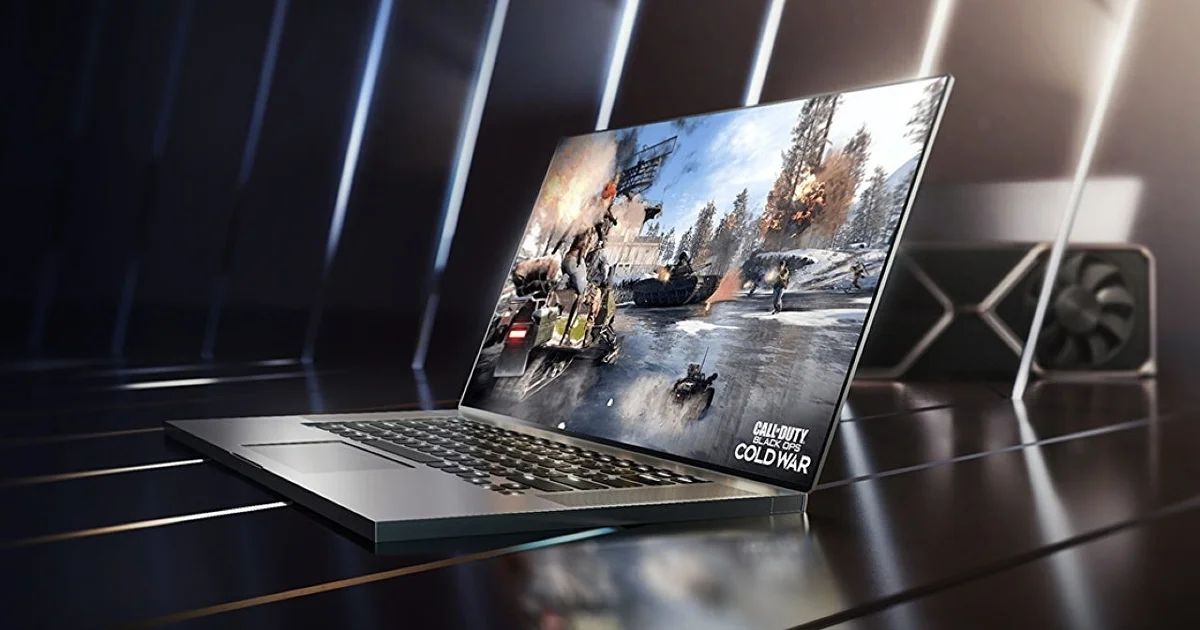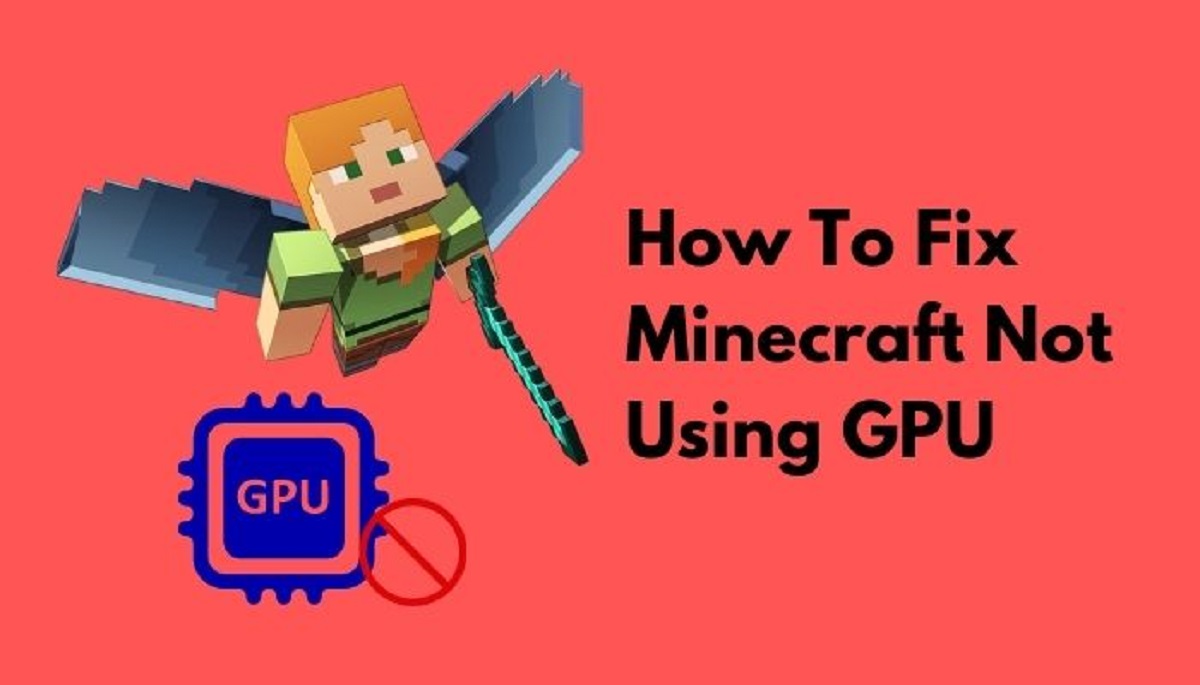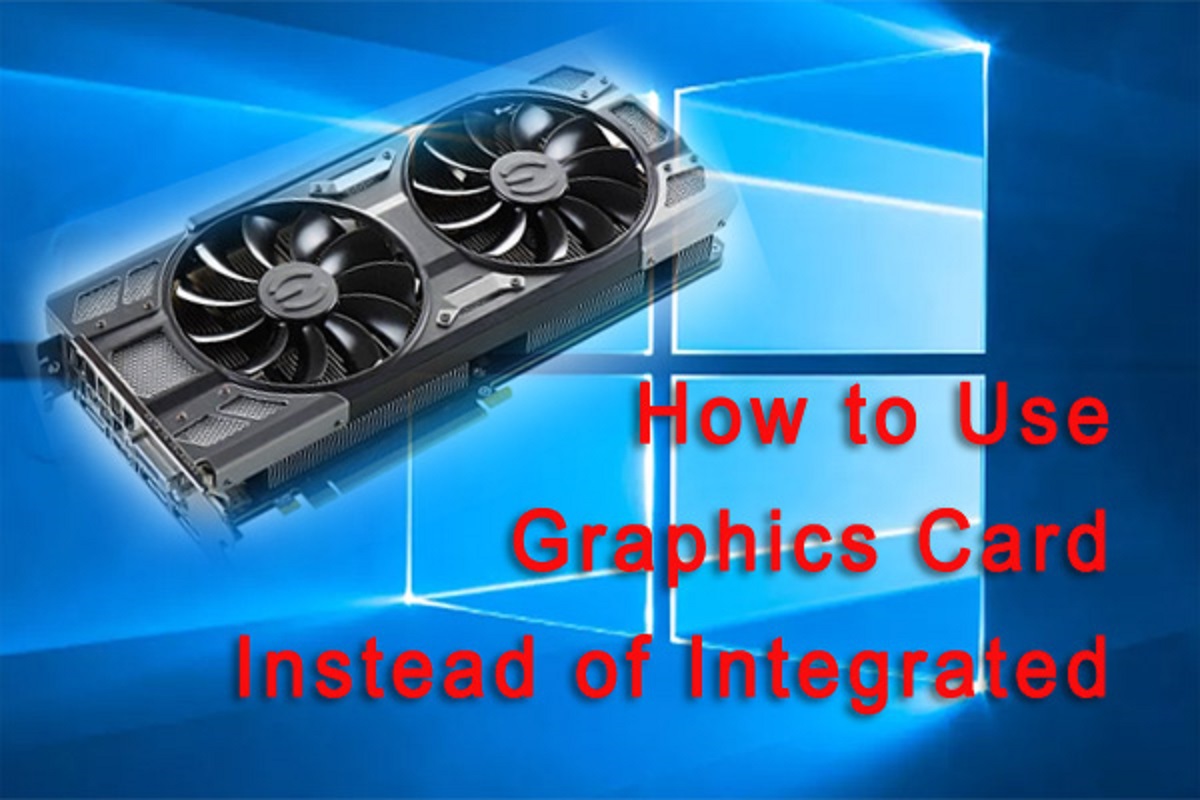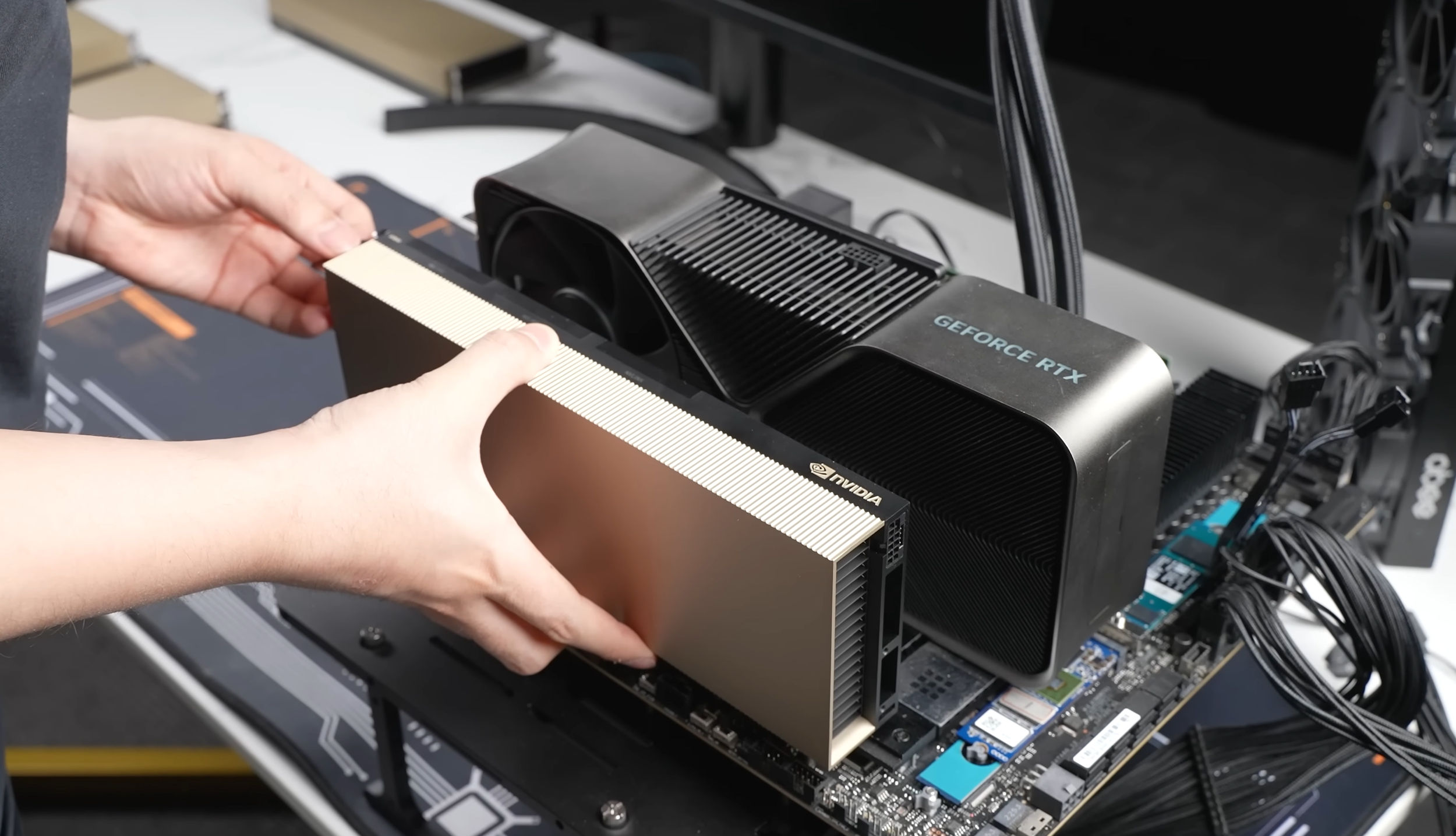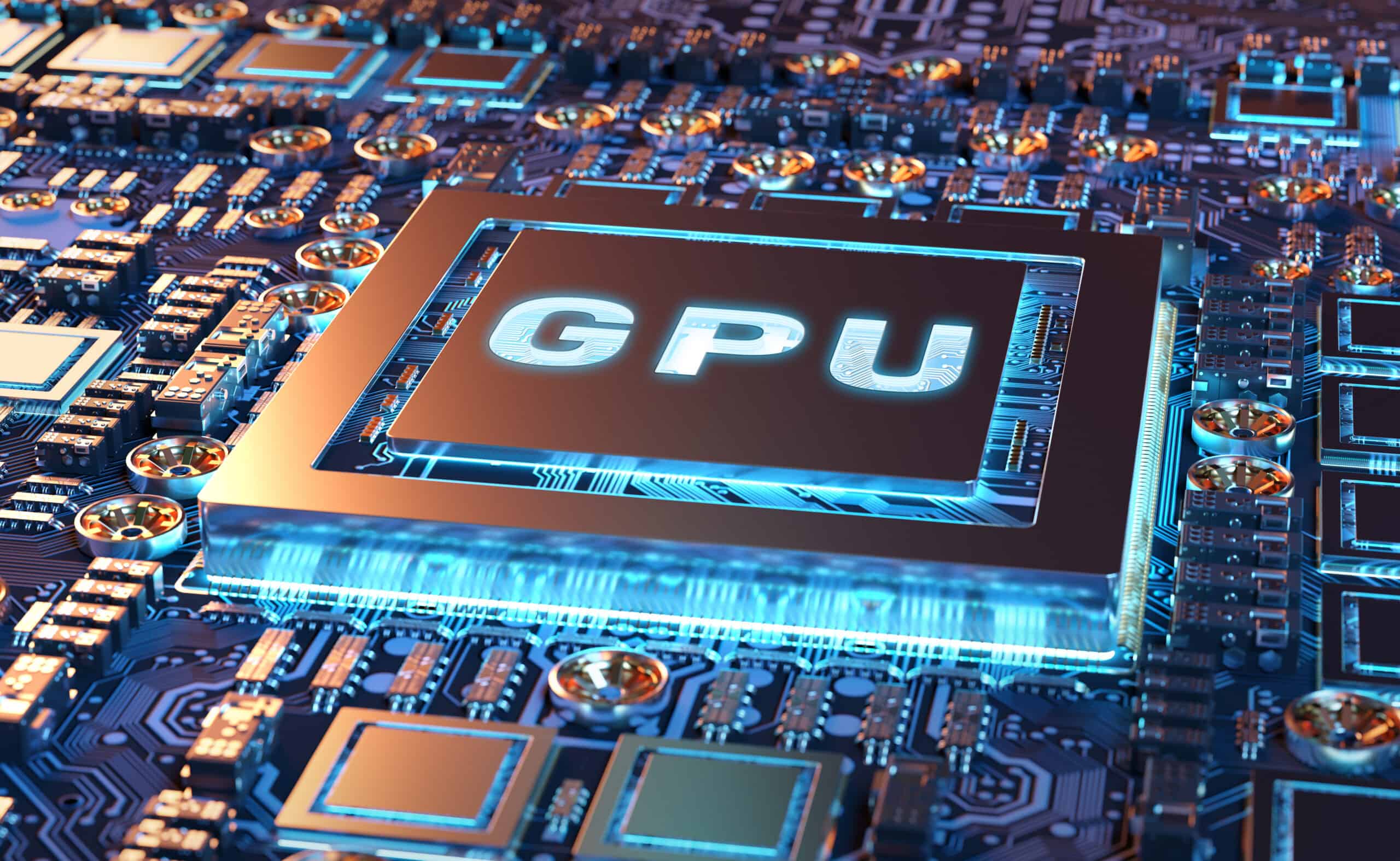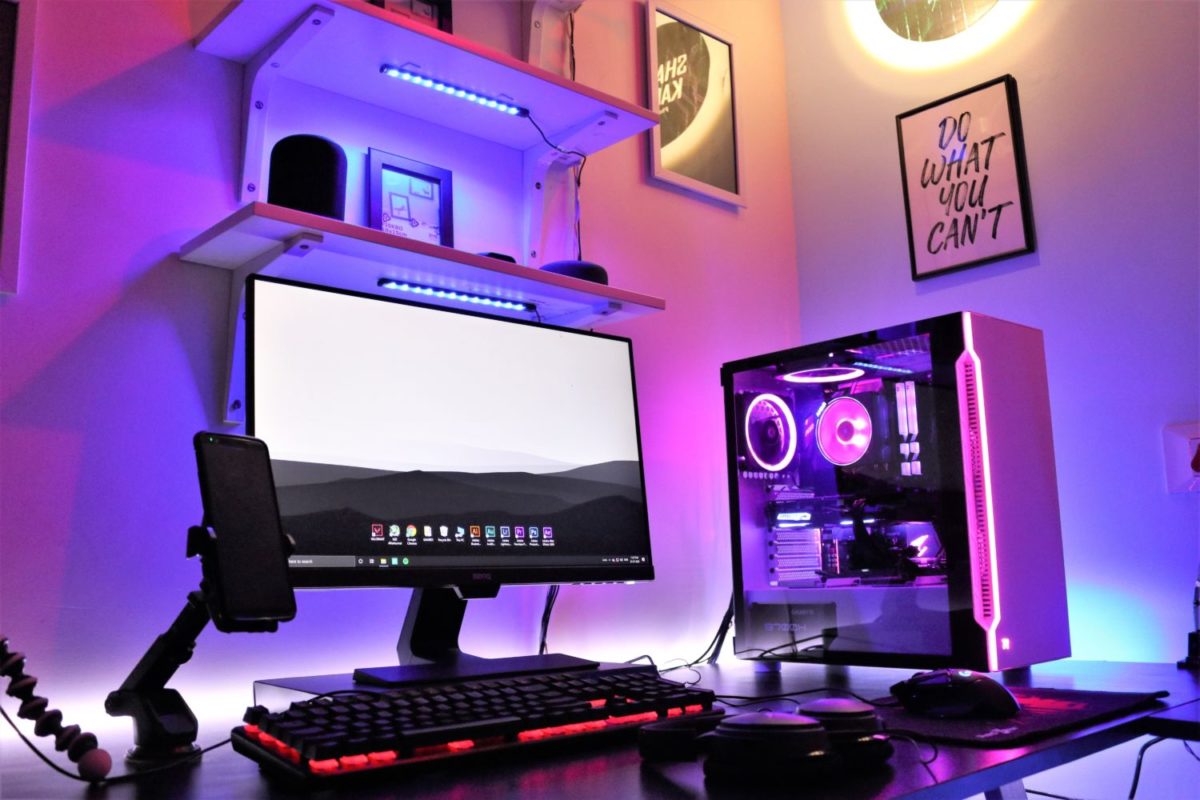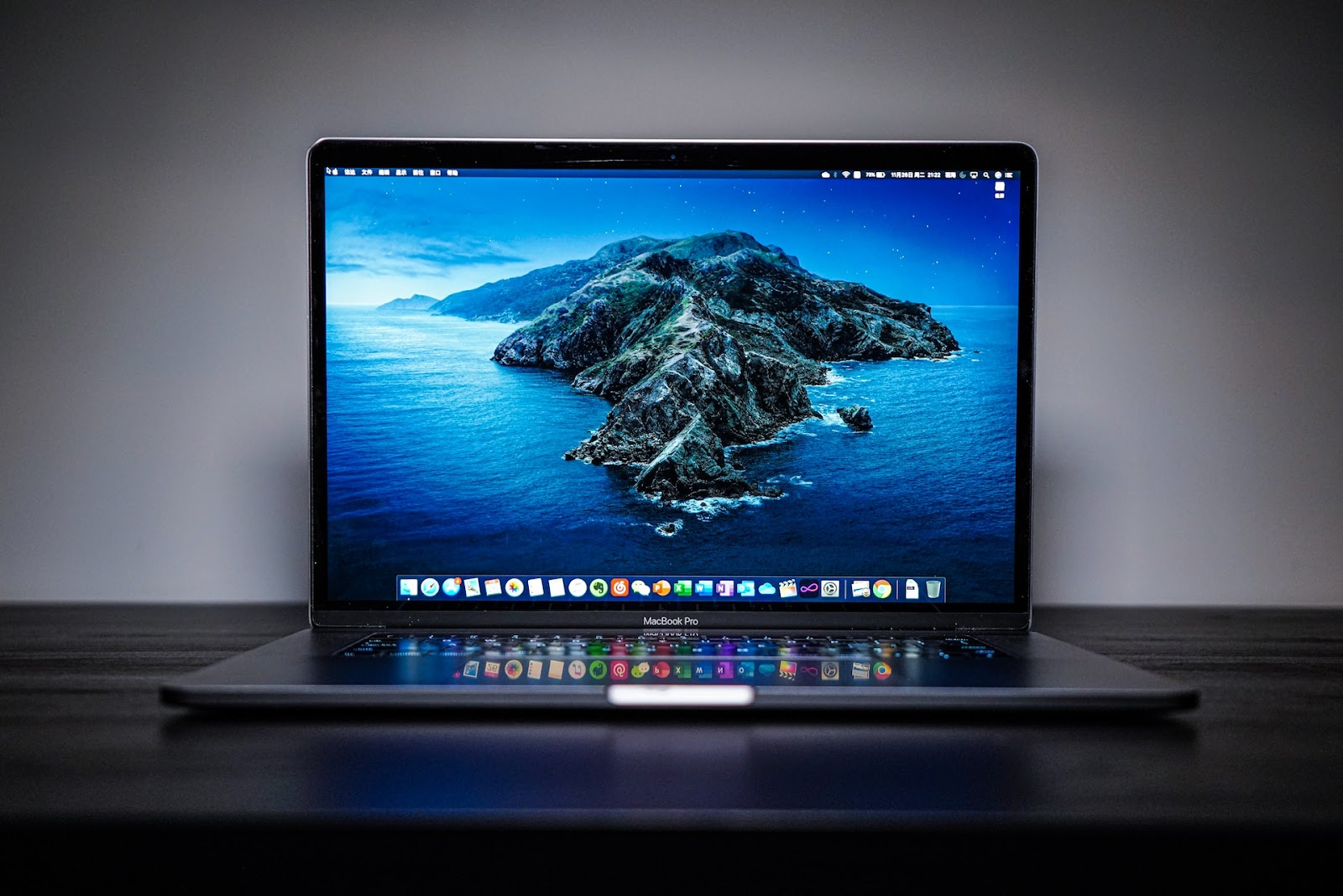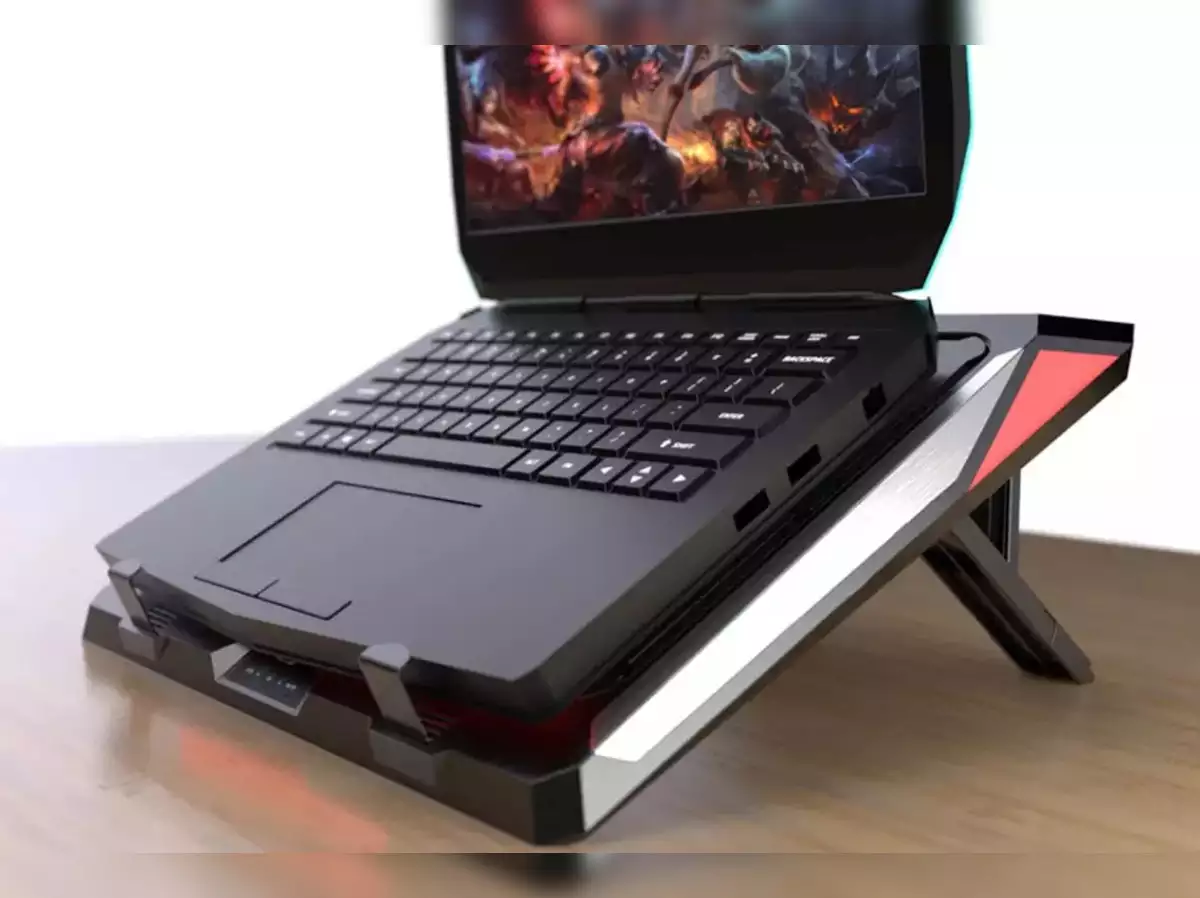Introduction
Welcome to the world of gaming, where digital adventures come to life and immersive experiences await players at every turn. Behind the scenes, there is a complex system of hardware and software working together to create these incredible moments. Two key components in this equation are the Graphics Processing Unit (GPU) and the Central Processing Unit (CPU).
The GPU and CPU play distinct roles in the performance and graphics capabilities of your games. The CPU is responsible for handling general-purpose computational tasks, while the GPU specializes in rendering complex graphics and calculations. Traditionally, gaming relied heavily on the CPU to handle both game logic and graphics rendering. However, with advancements in technology and ever-increasing demands for stunning visuals, game developers are now exploring ways to leverage the power of the GPU to offload some of the workload from the CPU.
Using the GPU instead of the CPU for games can significantly enhance performance, allowing for smoother gameplay, higher frame rates, and improved visual quality. By tapping into the parallel processing capabilities of the GPU, developers can take full advantage of its massive performance potential.
In this article, we will explore various techniques and strategies to make games utilize the GPU more effectively. We will delve into adjusting graphics settings, utilizing multi-threading, implementing compute shaders, and optimizing the rendering pipeline. These methods will help unlock the true power of your GPU and unleash a more immersive gaming experience.
So, whether you’re an aspiring game developer seeking optimization techniques or a gamer looking to maximize your gaming hardware’s potential, let’s dive into the world of GPUs and explore how we can make games use them to their fullest extent.
Understanding GPU and CPU
Before we dive into optimizing games to use the GPU more effectively, it’s essential to have a basic understanding of what the GPU and CPU are and how they differ in their functionalities.
The CPU, or Central Processing Unit, is often referred to as the “brain” of the computer. It handles a wide range of tasks, including managing system resources, executing instructions, and performing calculations. The CPU consists of several cores, each capable of executing instructions sequentially. It excels at handling single-threaded tasks that require complex calculations and decision-making.
The GPU, or Graphics Processing Unit, is a specialized processor designed specifically for rendering high-quality graphics and performing parallel calculations. Unlike the CPU, which focuses on sequential processing, the GPU is designed to handle massive amounts of data simultaneously. It comprises thousands of smaller cores, allowing for highly efficient parallel processing. This makes it ideal for handling graphics-intensive tasks like rendering complex scenes, applying visual effects, and simulating realistic physics.
While the CPU and GPU share some common features, their designs are optimized for different purposes. The CPU excels at general-purpose processing, making it suitable for tasks like running operating systems, executing applications, and handling game logic. On the other hand, the GPU’s specialized architecture and parallel processing capabilities make it perfect for compute-intensive tasks, especially graphics rendering.
To sum it up, the CPU is the all-around workhorse responsible for managing the overall system and executing instructions, while the GPU shines in handling parallel computations and rendering stunning visuals. Both components are essential for an effective gaming experience, but optimizing games to take advantage of the GPU’s capabilities can lead to significant performance improvements.
Now that we have a clearer understanding of the GPU and CPU, let’s explore why utilizing the GPU instead of the CPU for games can provide a tremendous boost in performance and graphical fidelity.
Why Use GPU Instead of CPU for Games
As technology advances and game graphics become more sophisticated, the demand for high-performance gaming experiences has skyrocketed. While the CPU plays a crucial role in overall system performance, tapping into the power of the GPU can have a significant impact on gaming performance and visual quality. Here are several reasons why using the GPU instead of the CPU for games is advantageous:
- Graphics Rendering: The GPU’s primary function is handling graphics rendering. It is specifically designed to process complex visual data and render it on the screen. By offloading graphics processing tasks to the GPU, games can achieve higher frame rates, smoother animations, and more realistic visuals.
- Parallel Processing: Unlike the CPU, which primarily focuses on sequential processing, the GPU excels at parallel processing. It contains thousands of cores that can execute instructions simultaneously, allowing for faster computations and improved performance when dealing with graphics-intensive tasks.
- Optimal Resource Utilization: By utilizing the GPU’s specialized architecture for graphics rendering, games can free up the CPU to handle other essential tasks, such as AI calculations, physics simulations, and game logic. This optimal resource allocation enhances overall system performance and responsiveness.
- Improved Visual Quality: The GPU’s ability to handle complex graphics operations, including shading, texturing, and lighting calculations, contributes to visually stunning and immersive gameplay experiences. By utilizing the GPU’s capabilities, games can achieve higher levels of detail, more realistic lighting effects, and smoother animations.
- Enhanced Compatibility: Most modern game engines and frameworks are designed to leverage the power of the GPU. By optimizing games to use the GPU effectively, developers ensure compatibility with a wide range of hardware configurations, making their games accessible to a broader audience.
By harnessing the power of the GPU, game developers can unlock a whole new level of performance and visual fidelity. However, it’s important to note that the effectiveness of GPU utilization also depends on factors like the game’s design, the optimization techniques applied, and the hardware specifications of the user’s system.
In the next sections, we will explore various strategies and techniques for making games utilize the GPU more effectively. These optimizations will help ensure that your game takes full advantage of the GPU’s immense processing power, resulting in a seamless, visually stunning gaming experience.
Adjusting Graphics Settings
One of the most straightforward ways to make games utilize the GPU more effectively is by adjusting the graphics settings within the game. Graphics settings dictate the level of detail and visual effects applied to the game, and finding the right balance can significantly impact performance. Here are a few key considerations when adjusting graphics settings:
- Resolution: The resolution determines the number of pixels displayed on the screen. Higher resolutions result in sharper visuals, but they require more GPU power. Lower resolutions can alleviate the GPU’s workload, leading to improved performance.
- Texture Quality: Texture quality affects the level of detail and sharpness of textures in the game. High-quality textures enhance visual fidelity but require more GPU resources. Adjusting texture quality to a level that provides a balance between performance and visuals can optimize GPU utilization.
- Shadow Quality: Shadows contribute to visual realism in games, but they can be computationally expensive. Lowering shadow quality or using less computationally intensive techniques like shadow mapping instead of ray tracing can reduce the GPU load and improve performance.
- Anti-Aliasing: Anti-aliasing smooths out jagged edges, improving overall image quality. However, it can be resource-intensive. Experimenting with different anti-aliasing techniques or reducing the level of anti-aliasing can help balance performance and visual quality.
- Post-Processing Effects: Post-processing effects like motion blur, depth of field, and ambient occlusion enhance visual realism but can strain the GPU. Adjusting the intensity or disabling certain effects can lighten the GPU’s workload and improve performance.
It’s important to mention that the optimal graphics settings may vary depending on the user’s hardware capabilities and personal preferences. Game developers often provide preset graphics options (e.g., low, medium, high) to simplify the process for users. However, manually fine-tuning the settings based on your hardware’s capabilities can yield better results.
Additionally, consider keeping an eye on system monitoring tools to gauge the GPU’s usage and frame rate while adjusting graphics settings. This real-time feedback will help you strike the right balance between visuals and performance.
By carefully adjusting the graphics settings to optimize GPU utilization, you can enhance performance, achieve smoother gameplay, and enjoy visually stunning gaming experiences.
Utilizing Multi-Threading
Multi-threading is an essential technique in game development that can significantly enhance GPU utilization. By dividing tasks into multiple threads, developers can leverage the parallel processing capabilities of the GPU and CPU simultaneously. Here’s how game developers can utilize multi-threading to make better use of the GPU:
1. Offloading CPU-Intensive Tasks: By assigning CPU-intensive tasks such as physics simulations, AI calculations, and game logic to separate threads, developers can free up the CPU’s resources. This allows the CPU to focus more on handling game-related tasks while letting the GPU handle graphics rendering and other parallelizable computations, improving overall performance.
2. Asynchronous Data Streaming: Games often require loading and processing large amounts of data, such as textures, models, and audio files. By utilizing multi-threading, developers can implement asynchronous data streaming techniques. This means that while the GPU is rendering the current frame, the CPU can simultaneously load and process data for upcoming frames in the background, reducing loading times and preventing stutters in gameplay.
3. Decoupling Game Logic from Rendering: Separating game logic from rendering allows developers to process them in parallel. By running the rendering and game logic tasks on separate threads, the GPU can focus solely on graphics-related calculations while the CPU handles game logic. This separation can lead to better overall performance and improved frame rates.
4. Thread Synchronization: It’s crucial to implement proper synchronization techniques when utilizing multi-threading to prevent race conditions and ensure data consistency. Techniques like locks, mutexes, and condition variables help coordinate and synchronize the execution of threads, ensuring proper order and preventing conflicts in data access.
5. GPU Compute Shaders: Utilizing GPU compute shaders is another powerful way to leverage multi-threading in graphics processing. Compute shaders allow developers to harness the GPU’s parallel processing capabilities for non-graphics tasks, such as physics simulations, particle systems, and complex data processing. By utilizing GPU compute shaders effectively, developers can unlock immense performance gains.
It’s important to note that implementing multi-threading requires careful consideration of hardware capabilities and potential bottlenecks. Not all tasks are suitable for parallelization, and improper implementation may lead to decreased performance or even instability. Game developers should profile and test their multi-threaded code thoroughly to ensure optimal performance and stability.
By effectively utilizing multi-threading in game development, developers can maximize GPU utilization, improve overall performance, and deliver smoother, more responsive gameplay experiences.
Implementing Compute Shaders
Compute shaders are a powerful tool that game developers can use to offload compute-intensive tasks to the GPU, further enhancing its utilization. Unlike traditional shaders that focus on graphics rendering, compute shaders allow for general-purpose computations on the GPU. Here’s how implementing compute shaders can benefit game development:
1. Parallel Processing: Compute shaders leverage the massive parallel processing capabilities of the GPU to perform complex calculations, simulations, and data processing tasks in parallel. This can significantly speed up computations and offload the CPU, leading to improved overall performance.
2. Physics Simulations: Game developers can utilize compute shaders to accelerate physics simulations, such as rigid body dynamics, cloth simulations, and particle systems. By running these simulations on the GPU, developers can achieve more realistic and interactive environments while freeing up the CPU for other game-related tasks.
3. Visual Effects: Compute shaders also play a crucial role in generating realistic visual effects in games. Techniques like advanced lighting models, volumetric rendering, and dynamic global illumination can be implemented using compute shaders. By harnessing the GPU’s processing power, developers can achieve stunning visuals that were previously difficult to achieve in real-time applications.
4. AI and Pathfinding: Compute shaders can be instrumental in accelerating AI calculations and pathfinding algorithms. By offloading these tasks to the GPU, developers can achieve more sophisticated AI behaviors and efficient pathfinding, resulting in more challenging opponents and immersive gameplay experiences.
5. Procedural Generation: Compute shaders are often utilized in procedural generation algorithms for generating terrain, textures, and other game assets. By leveraging the GPU for these calculations, developers can create vast, detailed, and unique game worlds with less strain on the CPU.
Implementing compute shaders requires knowledge of programming languages like HLSL, Cg, or GLSL, which are used to write the shader code. Game engines and graphics libraries often provide APIs and tools to facilitate the integration of compute shaders into the game development pipeline.
It’s important to note that not all hardware and platforms support compute shaders equally. Before implementing compute shaders, developers should consider hardware compatibility and gracefully fallback to alternative solutions for devices that lack support.
By effectively implementing compute shaders, game developers can unlock the full potential of the GPU, improve performance, and create visually compelling and immersive game experiences.
Optimizing Rendering Pipeline
The rendering pipeline is a critical component in game development that determines how game graphics are processed and displayed on the screen. Optimizing the rendering pipeline can greatly impact GPU utilization and overall game performance. Here are several strategies for optimizing the rendering pipeline:
1. Batching and Culling: Properly batching and culling objects can reduce the number of draw calls sent to the GPU, minimizing overhead and improving performance. Grouping objects with similar materials or shaders together allows for efficient rendering, while culling objects that are outside the camera’s view frustum avoids unnecessary calculations and rendering.
2. Level of Detail (LOD) System: Implementing a level of detail system reduces GPU processing by adjusting the level of detail of objects based on their distance from the camera. Objects that are far away can be rendered with lower polygon counts or simpler textures, saving GPU resources and improving performance without sacrificing visual quality.
3. GPU-Friendly Shaders: Writing shaders that are optimized for GPU performance is crucial. Avoiding unnecessary calculations, minimizing texture fetches, and using efficient shader techniques such as instancing and texture atlasing can significantly improve rendering performance on the GPU.
4. Dynamic Resolution Scaling: Implementing dynamic resolution scaling allows the game to automatically adjust the resolution based on the GPU’s performance. During demanding scenes, the resolution can be lowered, reducing the GPU’s workload while maintaining a smooth gameplay experience. This technique is particularly useful for achieving consistent frame rates on less powerful hardware.
5. Occlusion Culling: Occlusion culling is a technique that determines which objects are not visible to the camera and thus do not need to be rendered. By identifying and skipping the rendering of occluded objects, the GPU’s workload is reduced, resulting in improved rendering performance.
6. Render Queue Sorting: Efficiently sorting the render queue can reduce GPU stalls and improve performance. Grouping objects based on their material properties or depth can optimize the rendering order and minimize state changes, allowing the GPU to process the scene more efficiently.
7. GPU Profiling and Optimization: Profiling GPU performance using dedicated tools can help identify performance bottlenecks and areas for optimization. By analyzing GPU resource utilization and identifying potential inefficiencies, developers can make targeted optimizations to improve GPU utilization and overall rendering performance.
It’s important to note that the effectiveness of these optimizations may vary depending on the game’s specific requirements, hardware capabilities, and the complexity of the scene. Experimentation and thorough testing are essential to ensure optimal performance without compromising visual quality.
By optimizing the rendering pipeline, game developers can maximize GPU utilization, reduce rendering overhead, and achieve smooth, visually appealing gameplay experiences on a wide range of hardware configurations.
Conclusion
The utilization of the GPU in game development has become increasingly crucial as demands for immersive, visually stunning experiences continue to rise. By effectively making games utilize the GPU instead of relying solely on the CPU, developers can unlock a wealth of performance improvements and deliver captivating gameplay experiences.
In this article, we’ve explored various techniques for optimizing GPU utilization in games. We started by understanding the differences between the GPU and CPU, recognizing the GPU’s specialization in graphics rendering and parallel processing. We then delved into the benefits of using the GPU for games, including enhanced graphics rendering, parallel processing capabilities, optimal resource utilization, improved visual quality, and compatibility with modern game engines.
We explored specific strategies for maximizing GPU usage, such as adjusting graphics settings, utilizing multi-threading, implementing compute shaders for compute-intensive tasks, and optimizing the rendering pipeline. Each technique plays a crucial role in optimizing performance and achieving smooth, visually appealing gameplay experiences.
It’s important to note that while these optimization techniques are effective, the results may differ based on hardware configurations, game design, and optimization implementation. It’s always recommended to profile, test, and fine-tune the optimizations to deliver the best results for a given game.
As game technology continues to advance, the GPU’s role in game development will become increasingly important. By actively exploring and implementing techniques to maximize GPU utilization, game developers can push the boundaries of performance, achieve stunning visual fidelity, and create game experiences that captivate and engage players.
So, whether you’re a game developer aiming to optimize your games or a gamer seeking the best performance from your hardware, the utilization of the GPU in games opens up a world of possibilities that can truly elevate the gaming experience.







